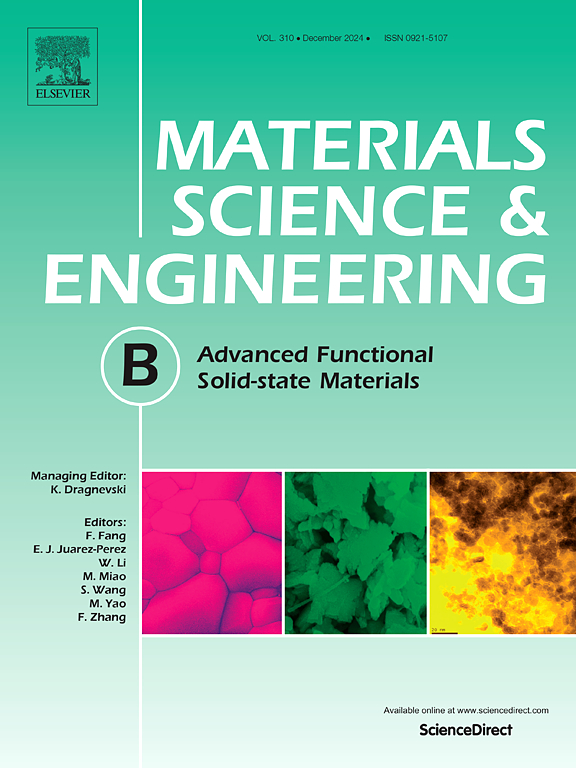Synergistic enhancement of carbon nanotube field emission properties through copper nanoparticle flake decoration under argon and nitrogen gas plasma
IF 3.9
3区 材料科学
Q2 MATERIALS SCIENCE, MULTIDISCIPLINARY
引用次数: 0
Abstract
Exploring carbon nanotubes (CNTs) for their low turn-on field and rapid emission has been a key focus in developing an optimal vacuum-based electron emitter. Despite the potential of CNTs for emission applications, specific limitations impact their overall efficacy. This study focuses on overcoming these limitations by altering the surface morphology of CNTs through the decoration of Cu nanoparticle (Cu NP) flakes via an Ar + N2 gas-based plasma process at different plasma powers. The field emission parameters demonstrate substantial improvements, including a reduced turn-on field from and threshold field from , an increment in a macroscopic emission current density from , and a field enhancement factor enhanced from , respectively. The decorated CNT field emitters meet orthodox field emission hypothesis criteria, suggesting their potential for vacuum electronic device applications.
在氩气和氮气等离子体条件下,铜纳米颗粒片装饰协同增强碳纳米管场发射性能
探索碳纳米管低导通场和快速发射的特性一直是开发真空电子发射器的关键。尽管碳纳米管在发射应用方面具有潜力,但特定的限制影响了它们的整体功效。本研究的重点是克服这些限制,通过不同等离子体功率的Ar + N2气基等离子体工艺,通过修饰Cu纳米颗粒(Cu NP)薄片来改变碳纳米管的表面形貌。场发射参数得到了显著改善,导通场(Eto)从2.631→1.917V/μm减小,阈值场(Eth)从3.768→2.552V/μm减小,宏观发射电流密度(J)从6.587→46.426mA/cm2增大,场增强因子(β)从2478→3977增大。经过修饰的碳纳米管场发射体符合传统的场发射假设标准,表明其在真空电子器件中的应用潜力。
本文章由计算机程序翻译,如有差异,请以英文原文为准。
求助全文
约1分钟内获得全文
求助全文
来源期刊

Materials Science and Engineering: B
工程技术-材料科学:综合
CiteScore
5.60
自引率
2.80%
发文量
481
审稿时长
3.5 months
期刊介绍:
The journal provides an international medium for the publication of theoretical and experimental studies and reviews related to the electronic, electrochemical, ionic, magnetic, optical, and biosensing properties of solid state materials in bulk, thin film and particulate forms. Papers dealing with synthesis, processing, characterization, structure, physical properties and computational aspects of nano-crystalline, crystalline, amorphous and glassy forms of ceramics, semiconductors, layered insertion compounds, low-dimensional compounds and systems, fast-ion conductors, polymers and dielectrics are viewed as suitable for publication. Articles focused on nano-structured aspects of these advanced solid-state materials will also be considered suitable.
 求助内容:
求助内容: 应助结果提醒方式:
应助结果提醒方式:


